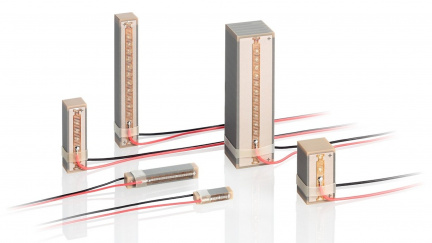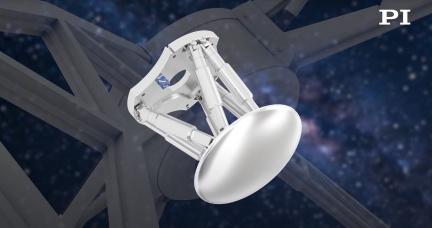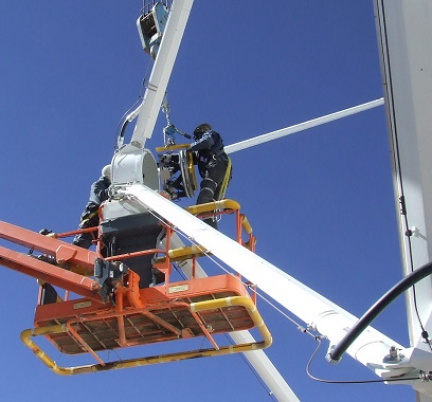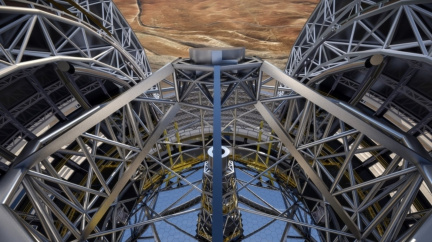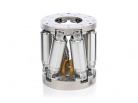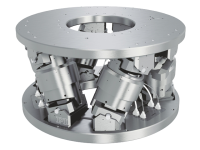Positioning systems, which are used to move mirror elements or sub-reflectors, are essential for the operation of large telescopes, probes and the overall success of space experiments. In addition to precision and dynamics, the functionality of components and subsystems under extreme environmental conditions and the ability to withstand high accelerations during rocket launch are also essential requirements.
On the basis of its long experience, Physik Instrumente offers extensive know-how and competence in the development and production of suitable solutions and has therefore become a co-participant in several major space projects.
PICMA piezo actuators help in Red Planet exploration
In order to analyse rock samples on Mars, the rock dust must first be sorted. To do this, the powder is shaken at different amplitudes and frequencies ranging from 0.9 to 2.2 kHz, achieving homogeneous particle size or density separation.
PICMA® multilayer piezoelectric actuators qualified for this task and are now part of one of the Curiosity Mars rover's instruments, called CheMin, designed for chemical and mineralogical analysis on Mars rocks.
PICMA piezo actuators perform the oscillations required for material selection and deliver them at a defined frequency. Their all-ceramic insulation makes them ideal for use in space conditions at near absolute zero temperature and extremely low ambient pressure. They are made without synthetic materials that could significantly degrade their reliability in such environments - as a result, the patented multilayer piezoelectric actuators can operate accurately and repeatedly for very long periods of time.
Extensive qualification and testing was required before the piezoelectric actuators could be used in CheMin. In particular, they were tested for durability - only after 100 billion (1011) cycles had been performed without performance degradation and failure was deemed almost impossible were the actuators approved for use in the Mars mission. No comparable actuators were able to meet the requirements - so NASA chose the PICMA® series from Physik Instrumente.
To date, PICMA actuators have helped with research into the Red Planet's environmental conditions!
ALMA (Atacama Large Millimeter/Submillimeter Array)
This is an array of 66 giant radio telescopes that operate as a network and operate on the Chajnantor sandy plateau in northern Chile (5000 m). The ALMA radio telescopes are capable of observing very cool space objects that shine in the millimeter and submillimeter wavelength region (e.g. clouds of gas and dust contributing to the formation of new stars) and have contributed significantly to the first image of a black hole taken in 2019 by the global Event Horizon Telescope (EHT) project .
The individual antennas are up to 12 metres in diameter, weigh approximately 100 tonnes and move flexibly across the sandy plain at distances of up to 16 km. The large mirrors of the individual antennas collect the cosmic radio waves and focus them onto the sub-reflector. The signals reach the detector inside the antenna only when the antenna is precisely aligned to within a fraction of a millimetre. Extreme environmental conditions at altitudes of over 5,000 metres, such as strong winds, high temperature differences between day and night, extreme drought, gravity and the Earth's rotation are all factors that affect the function of radio telescopes. Therefore, the sub-reflectors must be aligned very precisely at all times.
For this purpose, the ALMA developers relied on special positioning systems from Physik Instrumente - HEXAPODY. In this project, PI is using its technological expertise and long experience with micro- and nano-positioning technology.
The Hexapod systems with six degrees of freedom in motion are installed behind subreflectors and allow 6-D positioning with sub-micrometer resolution. The parallel kinematic structure of the hexapod system is considerably more compact and rigid than series-assembled multi-axis systems and leads to a very high resonant frequency. Since only one platform is controlled in the case of the hexapod, the moving mass is significantly smaller. The result is improved dynamics with significantly faster response.
For the hexapods used in ALMA antennas, PI has developed and manufactured highly rigid and robust joints suitable for operation even in extreme ambient conditions. These hexapods can therefore adjust the position of the subreflectors to within a few millimeters with an accuracy in the micrometer range.
ALMA is currently the largest astronomy project in the world!
European Extremely Large Telescope (E-ELT)
The European Extremely Large Telescope, or E-ELT for short, is a high-performance ground-based telescope operated by the European Southern Observatory (ESO), which is scheduled to be commissioned in 2024 at the summit of Cerro Armazones (Antofagasta region, Chile) at an altitude of 3046 metres.
This giant telescope has a segmented main reflector with a diameter of 39 m, a light collection area of almost 1 000 m² and is the largest telescope for the scientific assessment of electromagnetic radiation in the visible and near-infrared wavelength range.
One of the telescope's most important tasks will be to help us learn more about exoplanets, i.e. planets that exist outside the Solar System.
The main reflector will be made up of 798 mirror elements, each 1.4 metres in diameter, 50 mm thick and weighing 250 kg. Together, these segments will collect tens of millions more light than the human eye is capable of, and transmit this light to scientific instruments using additional optics. In order to compensate for deviations from the optimal beam path and thus avoid imaging errors, the mirror elements must be precisely aligned with each other. The deviation from the optimal beam path can be caused, for example, by deformation of the telescope tube due to gravity, thermal effects or wind pressure.
The individual segments will be attached to the main telescope structure by a support system, the basic components of which are positioning actuators (PACT) that will "curve" the reflector depending on the state of the atmosphere 1000 times per second and correct for deformations caused by atmospheric disturbances. Each segment will be mounted on three actuators that will control its position in three directions (piston, tip, tilt).
The European Southern Laboratory (ESO) has signed a contract with Physik Instrumente to build 2,394 positioning actuators (PACTs) that will adjust the positions of the 798 hexagonal mirror segments of the main reflector of the Extremely Large Telescope (ELT), which will become the largest eye of humanity capable of focusing 217 times more light than the Hubble Telescope.

